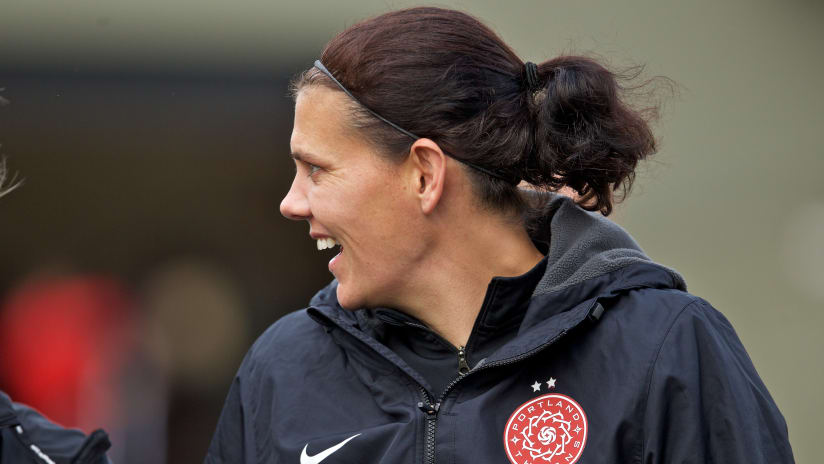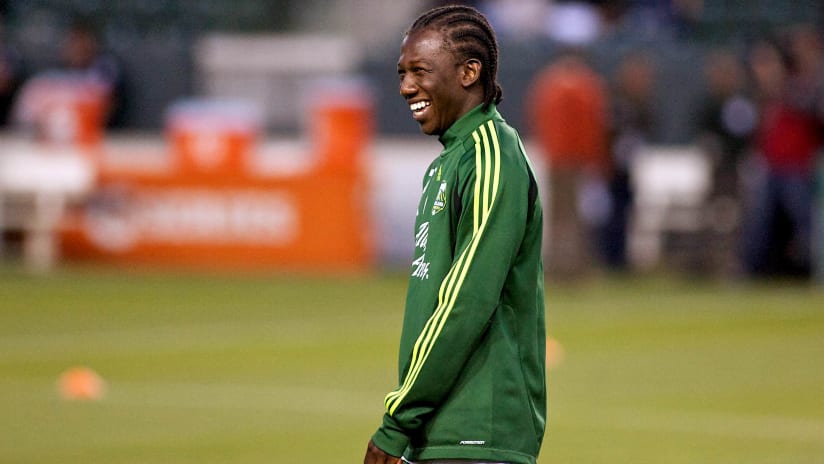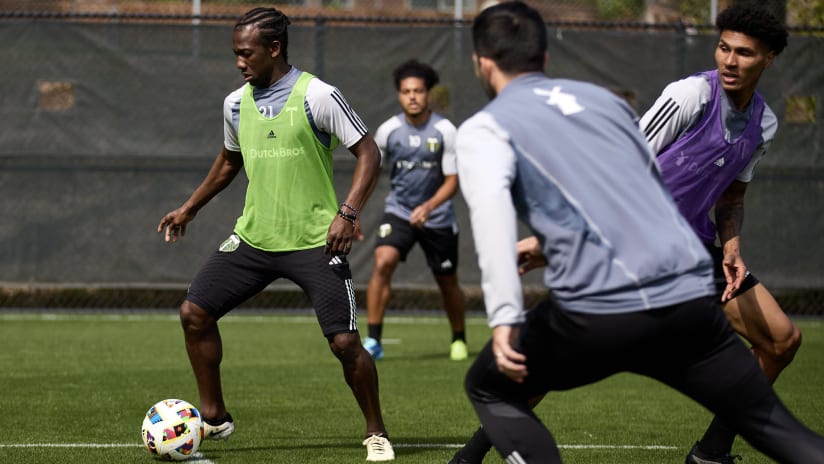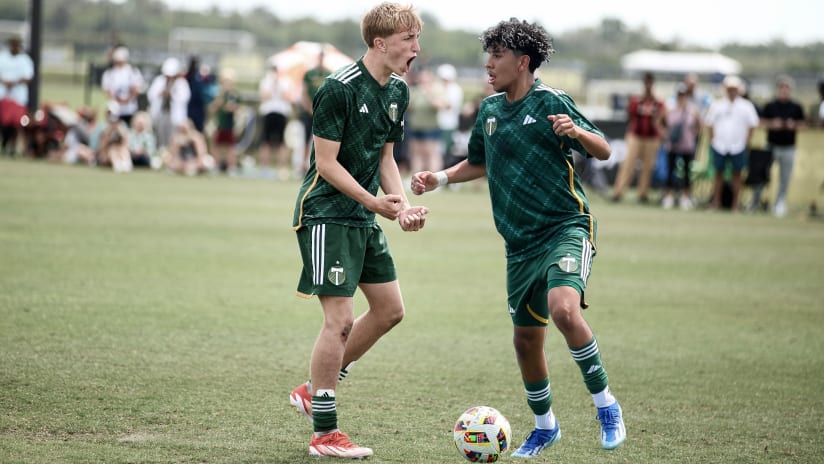A small league makes it easier for players to claim places at the top of leaderboards, but even with that in mind, the number Portland Thorns FC players who finished atop NWSL categories may be surprising. Perhaps it’s because the team’s season finished so soon, one game before the final, that we’ve looked beyond silver linings, but in terms of some individual performances, those silver linings are there.
Whether it be at the back, where Emily Menges and Meghan Klingenberg led the team, through the middle behind efforts of Lindsey Horan and Dagny Brynjarsdottir, or via name attackers like Tobin Heath and Christine Sinclair, Portland had players excel at all levels of the field, and while the numbers they dominated don’t carry high profiles, they show were, in a season of highs and lows, Portland’s talents stood out.
(Players listed in alphabetical order; all numbers include the playoffs)
Dagny Brynjarsdottir: 192 duels won (first)
We’ll dig into this more when we get to one of Brynjarsdottir’s teammates, below, but when you look at the Thorns midfield in terms of duels and aerial battles, the challenges of Portland’s midfield is clear. The Thorns had one of the strongest, more physical middles in the league, and while some opponents had other strengths to bring to the field, each had to prepare for a combative day in midfield.
Asserting herself in the Thorns’ main defensive midfield role, Brynsjardottir led the league in both aerial duels (135) and aerials per 90 minutes (7.34). With 192 overall duels, she placed opponents into battle every 8.61 minutes, becoming the team’s midfield sentinel during her first season back in Portland.
Tobin Heath: 2.89 chances created per 90 (first, among players with >-=1000 minutes)
Season totals may not do a good job of describing the impact World Cup players had when they returned, but in players’ rate stats, you see the true impact come out.
Consider Tobin Heath. One of the most dangerous wide attackers in the NWSL, Heath drew a foul every 45.5 minutes, a rate that ranked third in the league. In terms of assist rate, she ranked fifth (one every 394.3 minutes) while placing ninth in terms of successful dribbles (40.79 percent).
Dangerous on the ball. Creating for others. Forcing fouls. Yep. That’s Tobin Heath.
The creativity element also translated into chances. The 38 opportunities she created for teammates ranked fifth in the league, even before adjusting for time. Translate that into a 90-minute figure, and Heath made more chances than anybody else in the NWSL.
Lindsey Horan: 11.28 duels per 90 minutes (first)
Horan may not have been able to replicate the raw numbers of her 2018 MVP season, but across a number of different leaderboards, her line-to-line impact came through.
In terms of distribution, she was second in the league in passes (58.06), second in terms of passes in the opponents’ half (33.09) and sixth in passes into the final third (9.61, all three numbers per 90 minutes). In the air, she ranked first in headed shots on target per 90 (0.44), while deeper on the field, she was among the NWSL’s bests in terms of recoveries (10.48 per 90, second overall), times she won possession (also 10.48 times per 90; also second overall), and third in aerial duels (6.26 per 90).
That feels like a lot of numbers, so let’s focus more on that last area: duels. When opponents are preparing for the Thorns, they have to be ready for Horan to be involved in everything. Good game or bad, she’s going to be involved, whether it’s adding an extra number in the penalty box or being a threat to confront most entries into the Thorns’ half of the field.
That’s how those recovery, possession won, and aerial numbers get so high. Likewise, it’s why Horan led the NWSL in duels per 90 minutes. Finishing fourth in duels won (166, despite her World Cup absence), Horan was also successful in the challenges she created, playing her part in one of the league’s most physically challenging midfields.
Meghan Klingenberg: 11 big chances created (tied, second)
Was any NWSL player’s 2019 slept on as much as Meghan Klingenberg’s? Not a whisper for either of the league’s Best XI teams, yet …
Klingenberg was ninth in assists (four) in 2019 and fifth in terms of primary assists. She was one of only three players who had multiple assists off set pieces, and in terms of overall chances created (37), she ranked fifth in the NWSL. Whether we’re talking passes into an opponent’s half (575, fourth), the final third (202, third) or her pure number of touches (1,763, third), Klingenberg’s influence shines through in her numbers.
Her “big chances” created, though, deserves a second thought. Opta uses this category to track high-quality opportunities – places where the recipient should reasonably be expected to score. It sounds subjective and may have limited analytical value, but it does tell us something about Klingenberg’s impact.
She wasn’t just on the ball a lot. Her possession was leading to chances, good chances, for the Thorns.
Emily Menges: 5.59 clearances per 90 minutes (first)
Emily Menges famously doesn’t foul. She doesn’t go to ground. She keeps herself in the play. It’s why she’s only committed 13 fouls over the last four seasons (the span that is in the Opta database) and averaging a mere 0.16 infractions per 90 minutes.
As a result, the long-time Thorn is always ready to collect numbers elsewhere. She finished the 2019 season ninth in the number of times she won possession (181), seventh in recoveries per 90 minutes (9.28) and second in headed clearances (48).
And in terms of overall clearances, on a per minute basis, nobody was better. With 5.59 per 90 minutes, Menges continued to place herself among the elite defenders in the NWSL.
Midge Purce: Three penalties won (first)
Midge Purce’s breakout was so complete, you can find statistical excellence in almost any of the NWSL’s attacking numbers. She finished fourth in the NWSL in goals from open play (seven), was one of only two players to score twice with her head, led the league in penalty-box touches per 90 minutes (9.7), and was seventh in “big chances” created.
One of her more persuasive numbers, though, was one of the simplest, yet when you think about what it takes to draw a penalty from the opposition, it’s the number that might best encapsulate the variety of ways Purce tested opponents. Three times, this season, the Thorns forward earned Portland a try from the spot, with only one other player (North Carolina’s Kristen Hamilton) drawing more than one such whistle.
Hayley Raso: 2.07 fouls drawn per 90 minutes (first)
Relentlessness continues to be the hallmark of Hayley Raso’s game, something that explains why, in terms of winning possession in opponents’ final thirds, she was among the NWSL’s best. Though she was only able to play 1,086 minutes last season, the Australian international forced 1.82 turnovers per 90 near opponents’ goal, a rate that ranked second among all players who logged at least 1,000 minutes.
That relentlessness, though, can also get under opponents’ skin, as evidence by how often Raso was able to draw fouls. Infringed upon 2.07 times per 90, Raso whistles at a higher rate than any player in the league, something which both matches what we see with our eyes and explains the frustrations drawn from opponents.
Christine Sinclair: 34.62 percent shot conversion rate (first in NWSL)
In terms of soccer’s highest profile number, goals, Portland’s captain had her most prolific regular season, scoring nine times in 18 games to post her best goal rate in the NWSL (one goal every 180 minutes). But that wasn’t the only area in which Sinclair excelled. Despite missing time for international duty, “Sinc” finished:
- tied for fourth in the number of times she won possession in the opponent’s final third (29);
- seventh in aerial duels won (66);
- and ninth in chances created from open play (29).
Where Sinclair really stood out, though, was in chance conversion. Part of that was fueled by her chances from the spot – she had a league-high three penalty conversions in 2019 – but much of her efficiency was from open play, where she scored six times. Overall, at 34.62 percent, Sinclair was finding nylon with better than one out of every three shots.














